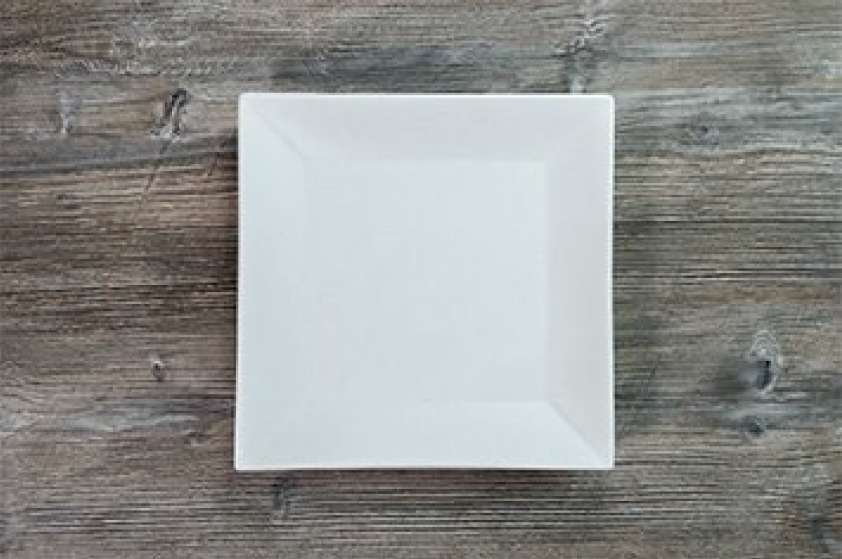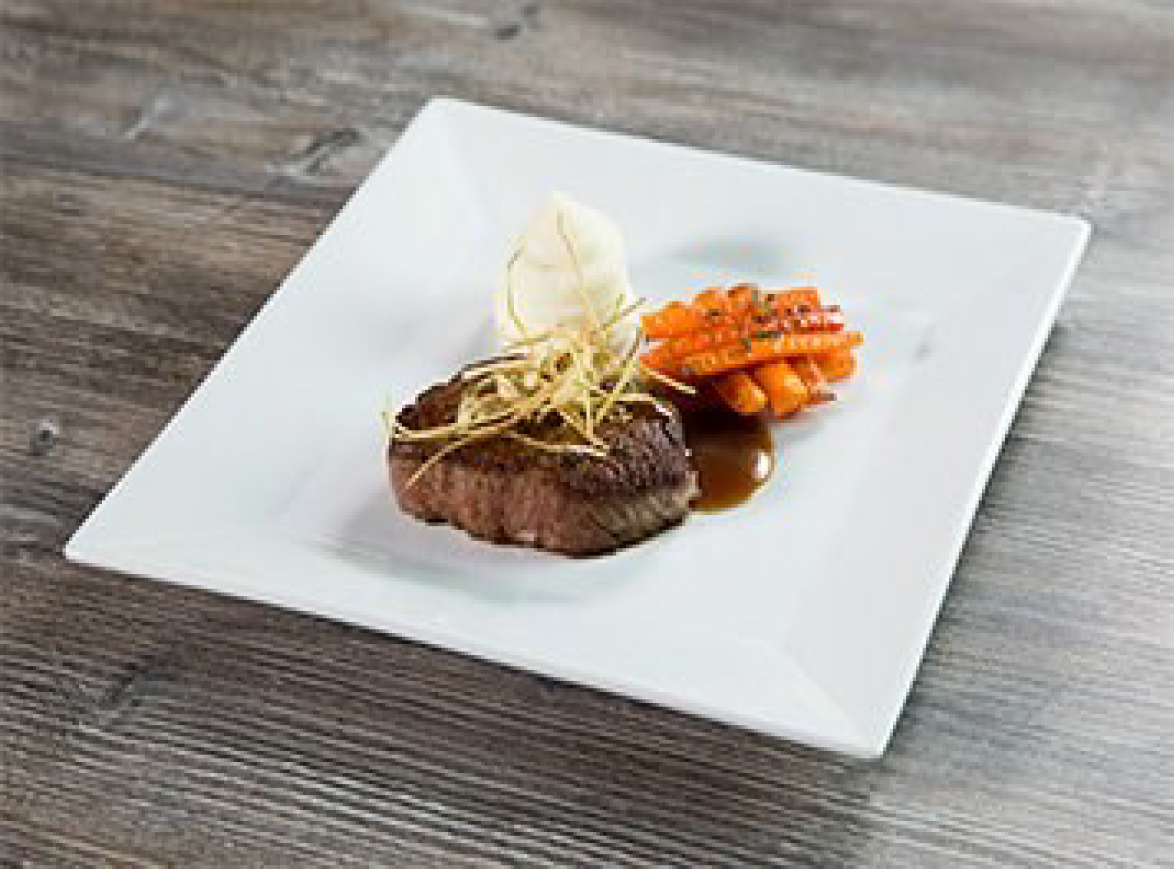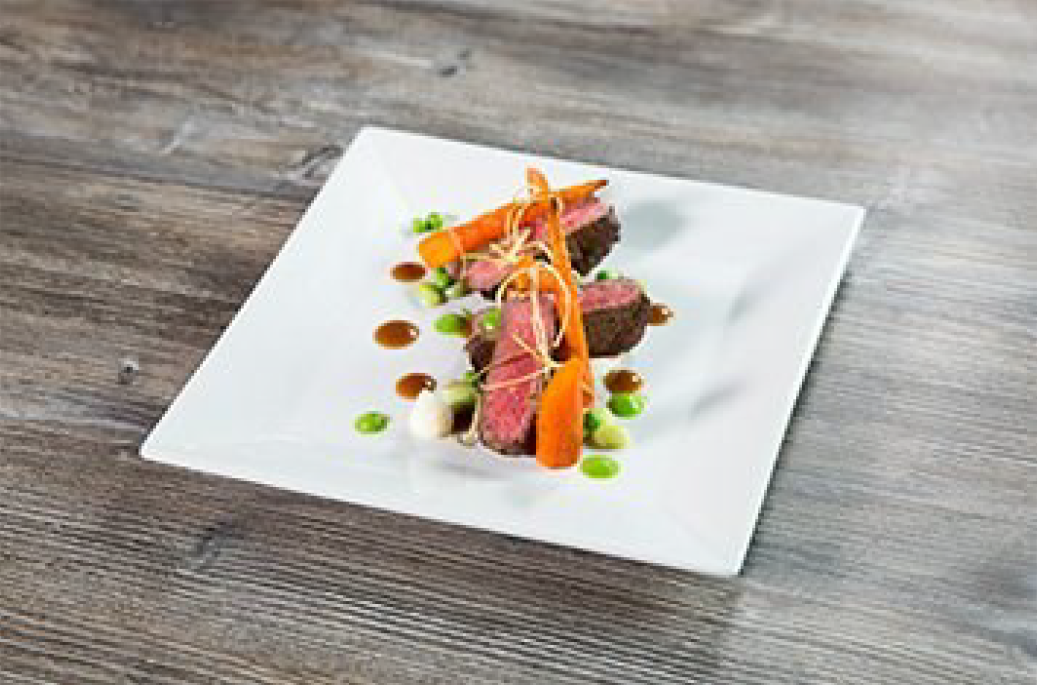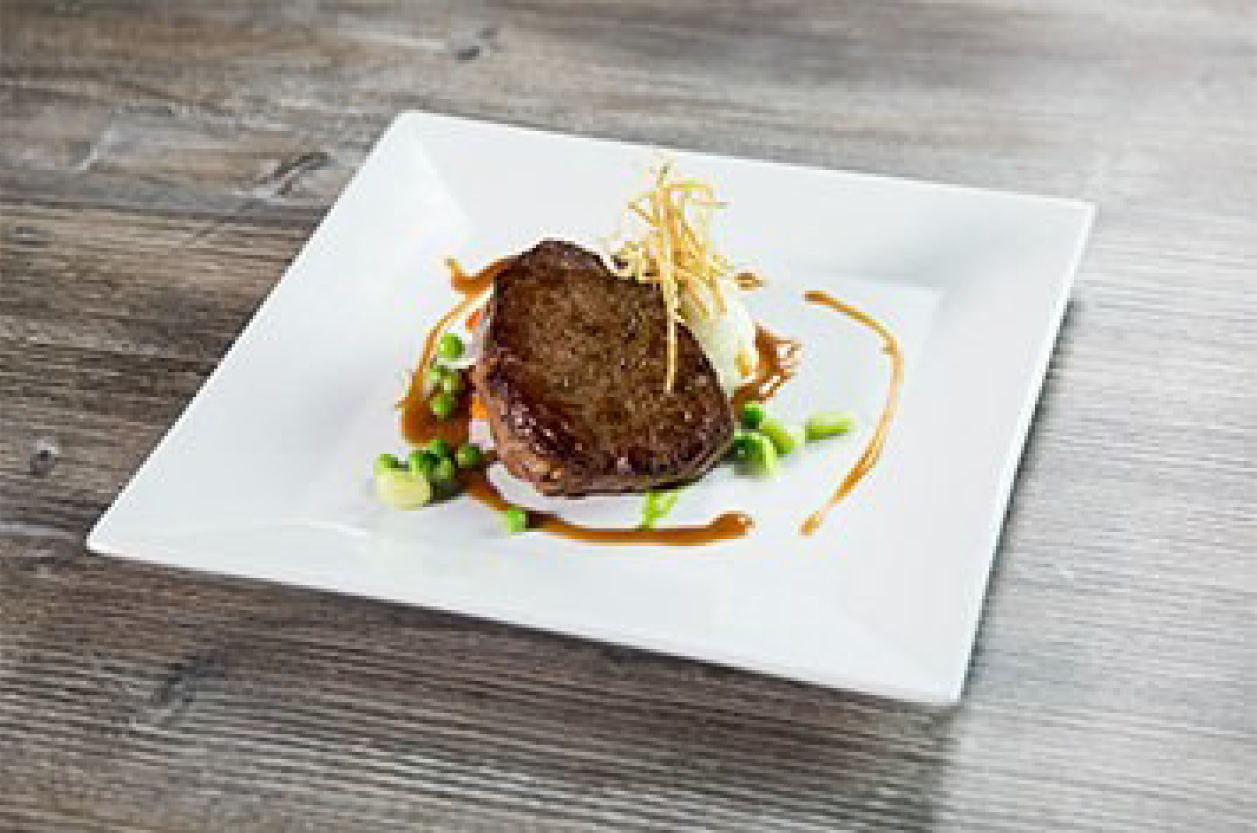4.1: Food Presentation
- Page ID
- 21842
\( \newcommand{\vecs}[1]{\overset { \scriptstyle \rightharpoonup} {\mathbf{#1}} } \)
\( \newcommand{\vecd}[1]{\overset{-\!-\!\rightharpoonup}{\vphantom{a}\smash {#1}}} \)
\( \newcommand{\id}{\mathrm{id}}\) \( \newcommand{\Span}{\mathrm{span}}\)
( \newcommand{\kernel}{\mathrm{null}\,}\) \( \newcommand{\range}{\mathrm{range}\,}\)
\( \newcommand{\RealPart}{\mathrm{Re}}\) \( \newcommand{\ImaginaryPart}{\mathrm{Im}}\)
\( \newcommand{\Argument}{\mathrm{Arg}}\) \( \newcommand{\norm}[1]{\| #1 \|}\)
\( \newcommand{\inner}[2]{\langle #1, #2 \rangle}\)
\( \newcommand{\Span}{\mathrm{span}}\)
\( \newcommand{\id}{\mathrm{id}}\)
\( \newcommand{\Span}{\mathrm{span}}\)
\( \newcommand{\kernel}{\mathrm{null}\,}\)
\( \newcommand{\range}{\mathrm{range}\,}\)
\( \newcommand{\RealPart}{\mathrm{Re}}\)
\( \newcommand{\ImaginaryPart}{\mathrm{Im}}\)
\( \newcommand{\Argument}{\mathrm{Arg}}\)
\( \newcommand{\norm}[1]{\| #1 \|}\)
\( \newcommand{\inner}[2]{\langle #1, #2 \rangle}\)
\( \newcommand{\Span}{\mathrm{span}}\) \( \newcommand{\AA}{\unicode[.8,0]{x212B}}\)
\( \newcommand{\vectorA}[1]{\vec{#1}} % arrow\)
\( \newcommand{\vectorAt}[1]{\vec{\text{#1}}} % arrow\)
\( \newcommand{\vectorB}[1]{\overset { \scriptstyle \rightharpoonup} {\mathbf{#1}} } \)
\( \newcommand{\vectorC}[1]{\textbf{#1}} \)
\( \newcommand{\vectorD}[1]{\overrightarrow{#1}} \)
\( \newcommand{\vectorDt}[1]{\overrightarrow{\text{#1}}} \)
\( \newcommand{\vectE}[1]{\overset{-\!-\!\rightharpoonup}{\vphantom{a}\smash{\mathbf {#1}}}} \)
\( \newcommand{\vecs}[1]{\overset { \scriptstyle \rightharpoonup} {\mathbf{#1}} } \)
\( \newcommand{\vecd}[1]{\overset{-\!-\!\rightharpoonup}{\vphantom{a}\smash {#1}}} \)
\(\newcommand{\avec}{\mathbf a}\) \(\newcommand{\bvec}{\mathbf b}\) \(\newcommand{\cvec}{\mathbf c}\) \(\newcommand{\dvec}{\mathbf d}\) \(\newcommand{\dtil}{\widetilde{\mathbf d}}\) \(\newcommand{\evec}{\mathbf e}\) \(\newcommand{\fvec}{\mathbf f}\) \(\newcommand{\nvec}{\mathbf n}\) \(\newcommand{\pvec}{\mathbf p}\) \(\newcommand{\qvec}{\mathbf q}\) \(\newcommand{\svec}{\mathbf s}\) \(\newcommand{\tvec}{\mathbf t}\) \(\newcommand{\uvec}{\mathbf u}\) \(\newcommand{\vvec}{\mathbf v}\) \(\newcommand{\wvec}{\mathbf w}\) \(\newcommand{\xvec}{\mathbf x}\) \(\newcommand{\yvec}{\mathbf y}\) \(\newcommand{\zvec}{\mathbf z}\) \(\newcommand{\rvec}{\mathbf r}\) \(\newcommand{\mvec}{\mathbf m}\) \(\newcommand{\zerovec}{\mathbf 0}\) \(\newcommand{\onevec}{\mathbf 1}\) \(\newcommand{\real}{\mathbb R}\) \(\newcommand{\twovec}[2]{\left[\begin{array}{r}#1 \\ #2 \end{array}\right]}\) \(\newcommand{\ctwovec}[2]{\left[\begin{array}{c}#1 \\ #2 \end{array}\right]}\) \(\newcommand{\threevec}[3]{\left[\begin{array}{r}#1 \\ #2 \\ #3 \end{array}\right]}\) \(\newcommand{\cthreevec}[3]{\left[\begin{array}{c}#1 \\ #2 \\ #3 \end{array}\right]}\) \(\newcommand{\fourvec}[4]{\left[\begin{array}{r}#1 \\ #2 \\ #3 \\ #4 \end{array}\right]}\) \(\newcommand{\cfourvec}[4]{\left[\begin{array}{c}#1 \\ #2 \\ #3 \\ #4 \end{array}\right]}\) \(\newcommand{\fivevec}[5]{\left[\begin{array}{r}#1 \\ #2 \\ #3 \\ #4 \\ #5 \\ \end{array}\right]}\) \(\newcommand{\cfivevec}[5]{\left[\begin{array}{c}#1 \\ #2 \\ #3 \\ #4 \\ #5 \\ \end{array}\right]}\) \(\newcommand{\mattwo}[4]{\left[\begin{array}{rr}#1 \amp #2 \\ #3 \amp #4 \\ \end{array}\right]}\) \(\newcommand{\laspan}[1]{\text{Span}\{#1\}}\) \(\newcommand{\bcal}{\cal B}\) \(\newcommand{\ccal}{\cal C}\) \(\newcommand{\scal}{\cal S}\) \(\newcommand{\wcal}{\cal W}\) \(\newcommand{\ecal}{\cal E}\) \(\newcommand{\coords}[2]{\left\{#1\right\}_{#2}}\) \(\newcommand{\gray}[1]{\color{gray}{#1}}\) \(\newcommand{\lgray}[1]{\color{lightgray}{#1}}\) \(\newcommand{\rank}{\operatorname{rank}}\) \(\newcommand{\row}{\text{Row}}\) \(\newcommand{\col}{\text{Col}}\) \(\renewcommand{\row}{\text{Row}}\) \(\newcommand{\nul}{\text{Nul}}\) \(\newcommand{\var}{\text{Var}}\) \(\newcommand{\corr}{\text{corr}}\) \(\newcommand{\len}[1]{\left|#1\right|}\) \(\newcommand{\bbar}{\overline{\bvec}}\) \(\newcommand{\bhat}{\widehat{\bvec}}\) \(\newcommand{\bperp}{\bvec^\perp}\) \(\newcommand{\xhat}{\widehat{\xvec}}\) \(\newcommand{\vhat}{\widehat{\vvec}}\) \(\newcommand{\uhat}{\widehat{\uvec}}\) \(\newcommand{\what}{\widehat{\wvec}}\) \(\newcommand{\Sighat}{\widehat{\Sigma}}\) \(\newcommand{\lt}{<}\) \(\newcommand{\gt}{>}\) \(\newcommand{\amp}{&}\) \(\definecolor{fillinmathshade}{gray}{0.9}\)Customers Eat With Their Eyes First
First impressions set customer expectations. Good impressions stimulate the appetite and get digestive juices flowing. Carelessly presented food usually means carelessly cooked and shows the customer that the chef has no regard for his food or his customer! Usually, what you see is what you get. Well presented food gets the customer excited before he takes the first bite!
Attractive food is a hallmark of professionalism
Creative and thoughtful plating enhances both the look and taste of your food. Focusing on presentation also allows chefs to showcase their creations and demonstrate to guests that they're getting their money's worth. While there aren't any hard and fast rules when it comes to "correct" plating, there are several important concepts to keep in mind as you prepare and present your restaurant's delicious culinary creations.
Professional chefs look at their creations with the eyes of an artist:
- Balance – food that taste good together and offer variety and contrast
- Color – two or three are more interesting that one (said to be monochromatic).
- Shapes – knife skills can offer a variety of shapes
- Texture – something chewy with something crispy, and something smooth or creamy. Different mouth feels stimulate the mind.
Guidelines for Plating Food
For tips and tricks on how to create a beautiful plate, consider the steps below:
Choose the Perfect Plate
Selecting the right plate for your meal is key to attractive food presentation. Here are some things to keep in mind:

- Choose the right plate. One way to conceptualize plating is to think of yourself as an artist, the plate as your canvas, and the food as your medium.
- Choose the right size plate. Choose your plate wisely by making sure it is big enough to allow your food to stand out, but small enough that your portions do not look too small.
- Choose a complementary plate color. The color of your plate is also significant. White plates are popular because they create high contrast and provide a neutral background for your colorful creations. Utilize white space by thinking of the rim as your frame, and consider using the rule of thirds to highlight your plate's focal point(s). When applied to cooking, the rule of thirds prescribes placing the focal point of your dish to either the left or right side of the plate, rather than the center.
Placing Your Ingredients
Here are a few of the most important aspects to consider as you build your dish:
- Plate with a clock in mind. As you begin plating your ingredients, picture the face of a clock. From the diner's point of view, your protein should be between 3 and 9, your starch or carbohydrate from 9 and 12, and your vegetable from 12 and 3.

- Use moist ingredients as your base. Another rule of thumb is to plate moist or runny ingredients first, as they tend to move during delivery if they are not held down by other foods. One way to anchor runny ingredients is by placing other foods on top of them. For example, you can angle sliced meat or vegetables against purees and mashed vegetables.
- Serve odd amounts of food. If you are serving small foods like shrimp, scallops, or bite-sized appetizers, always give guests odd quantities. Serving seven Brussels sprouts instead of 6 creates more visual appeal, and diners will also perceive that they're getting more food.
- Place food to create flavor bites. Essentially, flavor bites are forkfuls of food that combine all of the ingredients in your dish into one bite. Creating flavor bites is the perfect accompaniment to creative plating as it pleases both the eye and the taste buds.
- Do not overcrowd your plate. Be sure to never overcrowd your canvas, and keep it simple by focusing on one ingredient - usually the protein. Finding a focal point also ensures that the accompanying ingredients will play a complementary, supporting role.
Pay Attention to the Details
As you ‘plate’ your dish, you will also want to pay attention to the details:
- Think about color and contrast. One of the best-kept secrets to beautiful plating is paying close attention to the details. While your focus will obviously be on the protein, considering how the other elements of the plate create color and contrast is also very important.

You can create a beautiful background for your plate by adding green vegetables or brightly colored fruits as accent points. Similarly, try to pair ingredients with complementary colors, as this will further enhance your dish's visual appeal.
- Create height on your plate. Another way to catch your guests' eyes is to utilize the power of height. While compactly stacking ingredients is not as popular as it was 5-10 years ago, creating a tall plate can go a long way towards enhancing visual appeal.
You can also balance out taller ingredients by leaning long, flat items against them. For example, you can plate your steak on top of polenta and lean asparagus spears against them at a 45-degree angle.
- Use texture to enhance your dish. Finally, don't forget about texture. Contrasting a smooth vegetable puree with crunchy onion straws or topping a steak with crumbled blue cheese creates appealing texture combinations that are classic in high-end cuisine.
Design and Create with Sauces
Once you've plated your main ingredients, you're ready to top your dish with delicious sauces. Don't just pour the sauce carelessly all over the plate, though. Instead, think of your squeeze bottle or spoon as a paintbrush, and your sauce as a medium. Then, use them to enhance your plate.
One way to do this is to create accent dots on one side of your plate (while considering the rule of thirds) or by lightly drizzling sauce over the main ingredients so guests get a little bit of sauce in every bite.
Use Garnishes Purposefully

In the past, chefs casually threw a piece of kale and an orange slice onto every plate as it left their kitchen. However, these garnishes did not add anything exciting to the dish, and few guests even ate them in the first place. Here are a few examples of smart garnishes and how to incorporate them:
- Choose edible garnishes. As you finish plating, remember that garnishes must be related to the dish and should always be edible. Ultimately, they are designed to enhance and complement the flavors of the entree you have created, not distract from them.
- Place garnishes purposefully. Similarly, never heap garnishes in one corner of the plate. Instead, disperse them thoughtfully in order to add color or texture. Also, avoid using unappetizing garnishes like raw herbs, large chunks of citrus, and anything with a strong odor. Lastly, make sure your garnishes are quick and easy to apply, so food still goes out piping hot.


